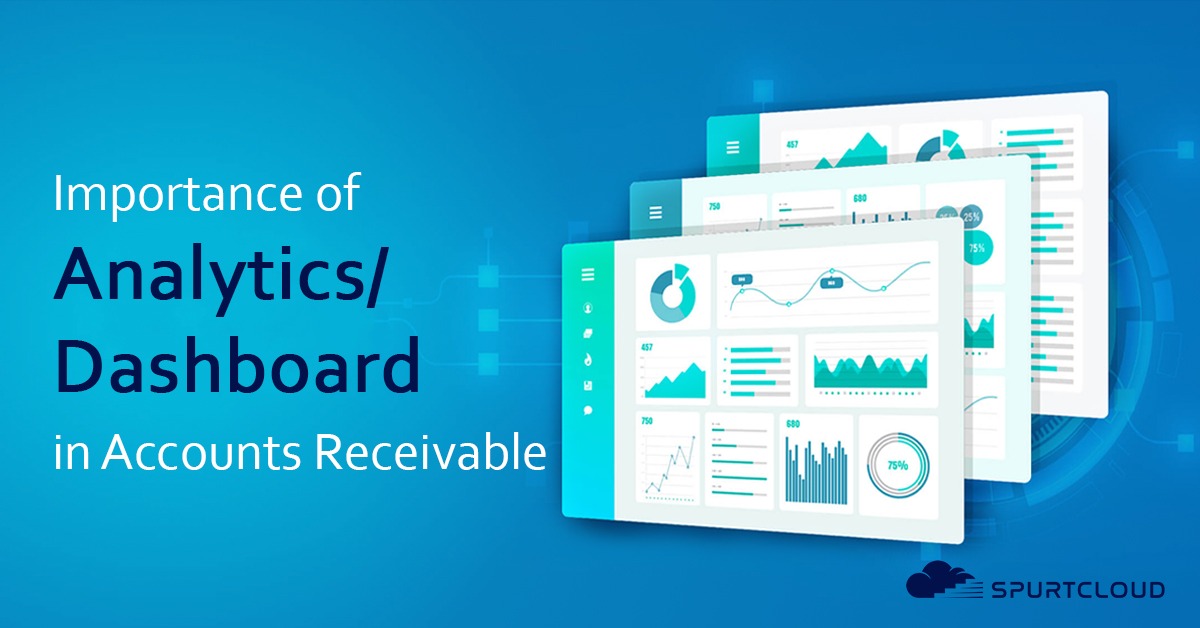Accounts receivable is one of the most important components of a company’s balance sheet. As a member of the A/R Department, you must manage five unique processes: order hold and release, collections management, credit management, A/R collaboration, deductions, and disputes. Each of these processes requires a different workflow and without a consolidation platform to unify five sources of information, it becomes difficult to maximize your A/R Department’s performance.
The value of an AR reporting dashboard
In today’s ever-changing business world, having information at your fingertips is important for enabling swift decision making and long-term business success.
Dashboards demonstrate how to leverage data to your advantage. They can be dynamic and interactive, allowing you to view the data that best meets your needs by using filters. Dashboards collect data from several sources and systems and combine it into a single interface to provide a comprehensive perspective of the business.
Dashboards in A/R assist stakeholders in understanding the present situation of their accounts receivable and tracking down their most outstanding payments. In addition to the overview of top debtors and bills, allowing them to have a better knowledge of the general state of their invoices and debtors. It provides an overview of invoice tracker, that can be filtered by Invoice Date to focus on the periods that are most important to your organization.
Finance and A/R executives must choose a dashboard that guarantees important working capital indicators are constantly at their fingertips. The main difficulties of not using a dashboard are discussed in the next chapter. It also clarifies the main limitations of using a dashboard with a lot of data and spreadsheets.
Also, Dashboard reporting is an indispensable tool for business owners and managers. It compiles all of the key performance indicators (KPIs) and significant metrics for the organization into a single, easy-to-read report. They assist business owners and managers in reviewing the big picture of business operations on a frequent basis, emphasizing major concerns, risks, and trends.
The Most Important Factors for the Ideal Dashboard
The objectives of an organization can be rapidly converted into quantifiable measures using an accounts receivable dashboard for receivables management. It helps the executives to precisely compare the present with organizational objectives.
An accounts receivable dashboard, in summary, is a tool for tracking and evaluating a company’s performance in terms of cash management. It lists significant performance indicators including:
An A/R dashboard offers immediate access to both fundamental and sophisticated data aspects to assist collectors, managers, and executives in better understanding the present state of their receivables and progress toward their own and the organization’s goals.
Importance of Data Analytics (DA) for AR
An efficient AR management plan enables the company to allocate credit in the most aggressive manner while yet keeping non-payment risk constraints in check. This gives businesses a technical edge in a market for similar goods and services while also enabling rapid growth with low risk. As they can be managed by the AR department, a strong plan places more emphasis on post-billing issues and less emphasis on pre-billing ones. It also aids in offering answers to issues like knowing how to escalate situations and knowing who to follow up with how and when.
Benefits of DA integrated A/R strategy.
Through interactive dashboards with all the necessary KPIs for global, multi-currency, or multi-entity enterprises of any size, DA makes the process of managing AR very simple and straightforward. Every pertinent vital component relating to the client is condensed in the dashboard’s summary view. All of this helps businesses by encouraging clients to pay promptly and avoid defaulting.
Due to the extra benefit of integrated analytics being cloud-based, businesses can quickly access the dashboard and data from any place.
Businesses that employ integrated receivable management with data analytics can invest much less and get the highest return on their money. SpurtCloud can assist you in doing that by providing the greatest A/R is viewed holistically through the built-in dashboard, which is helpful for financial planning, DSO (Day Sales Outstanding), performance evaluation, and making wise choices about how to increase cash flow.
Are you facing the following issues?
Wasting time doing repeating tasks like sending manual reminder through email and sms?
Losing track of customer requests like handing disputes?
Increased DSO and reduced cash collection?
Get in touch with us to learn how SpurtCloud can help digitize your A/R Department.


